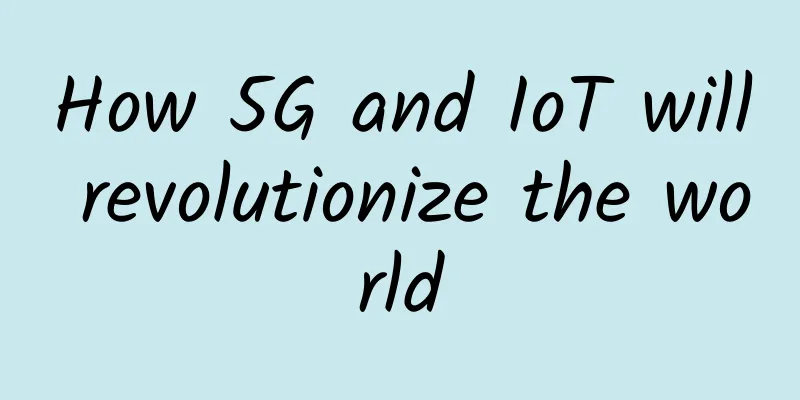2G network withdrawal encounters new resistance, and most of the existing IoT is based on 2G network

|
Currently, operators are actively migrating 2G users to 3G/4G networks, hoping to achieve the goal of withdrawing 2G from the network as soon as possible. However, news recently revealed that this plan is facing new resistance, that is, most of the current IoT connections are based on 2G networks. In the past few years, the Internet of Things has gradually emerged, and operators have also actively promoted it, hoping to seize the opportunity before the Internet of Things explodes. Among the three major operators, China Mobile is the most active in promoting the development of the Internet of Things, and it also accounts for the vast majority of China's Internet of Things connections. According to data released by China Mobile in November 2017, its number of IoT connections exceeded 320 million; China Unicom had 70 million IoT connections by the end of 2017; and China Telecom had 27.98 million IoT connections by the first half of 2017. It can be seen that China Mobile's number of IoT users exceeds that of the other two operators.
From the above data, it can be seen that the number of IoT connections in China is expected to exceed 400 million by the end of 2017, which is equivalent to about 30% of the number of mobile users of China's three major operators. The IoT is showing a rapid development momentum. However, the current IoT connection is still mainly based on 2G networks, especially China Mobile, which is related to network coverage and cost. In terms of network coverage, China Mobile's 3G network coverage is poor, and the 4G network is built on the 1.8GHz and 2.3GHz frequency bands, while the 2G network is built on the 900MHz and 1.8GHz frequency bands. Since the 2G network has a lower frequency band, its coverage is much better than the higher frequency band 4G, especially in the corners of the city, its 2G network coverage is much better than 4G. For the Internet of Things, network coverage is needed everywhere. China Mobile seems to have recognized this problem. In 2017, the number of its 2G base stations did not decrease. In fact, the number of its 2G base stations increased by 30,000 when the number of 2G users decreased rapidly. This seems to provide better network coverage for the Internet of Things services. Another issue is cost. The current 4G IoT chip cost is relatively high. It is understood that the price of a 2G module is only a fraction of that of a 4G module. As for IoT services, some current IoT services do not require high-speed data networks, such as POS machines and shared bicycles. In this case, in order to control costs, most of these IoT services also use 2G network services. Of course, it is different for China Telecom and China Unicom. The 4G they operate is LTE-FDD technology. Previous tests have shown that the coverage radius of LTE-FDD base stations is not much different from that of 2G in the same frequency band. China Telecom is eager to withdraw the 2G CDMA network to reduce operating costs, while China Unicom's 2G network has poor coverage. They have respectively obtained licenses to use the low-frequency 800MHz and 900MHz for the construction of LTE-FDD. Of course, they are motivated to withdraw the 2G network as soon as possible to use the low-frequency bands for the construction of LTE-FDD or 5G. Under such circumstances, after China's three major operators actively promote 2G mobile users to switch to 3G/4G networks, they will also face the need to migrate these IoT services to 3G/4G networks as soon as possible so that they can withdraw the 2G network as soon as possible. China Telecom and China Unicom are expected to be the operators to withdraw the 2G network the fastest due to the small number of IoT connections and other factors, while China Mobile will be slower. |
<<: In the 5G era, what else can we sell besides traffic?
Recommend
Wi-Fi 6 is not yet popular, so why has the latecomer Wi-Fi 7 become a battlefield for giants?
When it comes to Wi-Fi, everyone is familiar with...
Managing the Digital Experience with Riverbed SteelCentral
It’s the age of digital business. Two-thirds of c...
"Broadband China" has not yet succeeded. FTTH should move from "bombardment" to "intensive cultivation".
FTTH has been around for 14 years since its promo...
Elegantly read http request or response data
There are many ways to read data from http.Reques...
Web Hosting Guide: Ten Ways to Improve Website Performance
In today’s digital world, website speed is extrem...
Detailed explanation of STM32 network DMA controller
[[380257]] The block diagram of the STM32 network...
In the next generation technological revolution, the Internet of Things, who will play the role of “vanguard”?
The Internet of Things (IoT) is widely regarded b...
With the advent of 5G, will the future of commercial Wi-Fi be a setback or a step forward?
Entering the Internet age, the Internet allows pe...
spinservers: $99/month 1Gbps unlimited traffic - E3-1280v5, 32G memory, 1T NVMe hard drive, Dallas data center
Last week we shared information about spinservers...
The final of the Maker Beijing 2020 Kunpeng Application Innovation Competition is about to begin. Who will win the championship?
On August 20, 2020, the Maker Beijing 2020 Kunpen...
Energy consumption transformation issues of traditional IDC in the 5G era
[[387217]] In the modern society where technology...
my country's broadband users reach 510 million: 100M rate reaches 91.5% and Gigabit users exceed 14 million
[[419885]] What's the bandwidth of your home ...
How to Choose the Right Data Cabling for Your Business
Are you building a new office? Is your current of...
Sketch of China's Government Cloud Industry in 2017
[[188315]] [51CTO.com original article] In the ne...
Huawei's ecosystem is expected to prosper exponentially in response to demand
【51CTO.com original article】 As we all know, in t...









